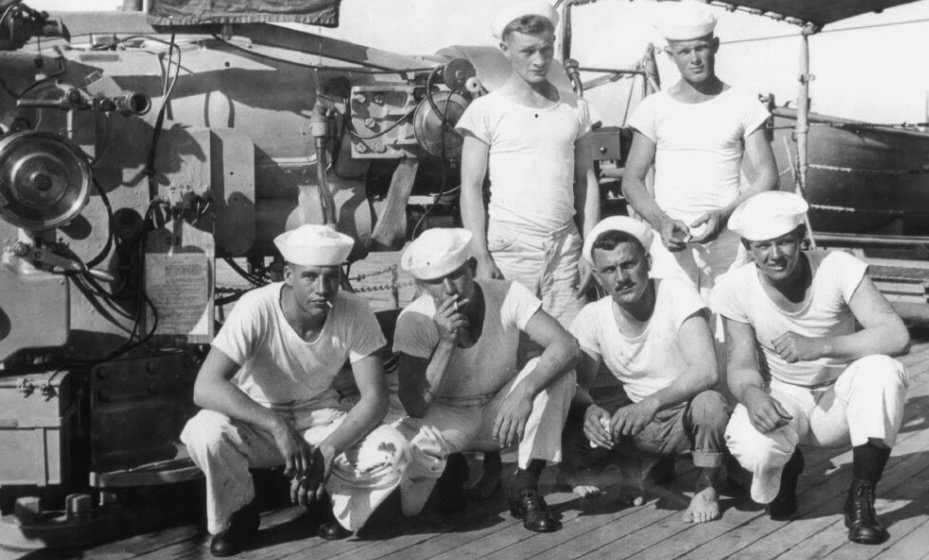T-Shirt- Medium as message
It all started late 19th century when the Union Suit was invented, was one piece underwear with front buttons to be worn under the uniform or everyday clothes. Soon they realised it could not be worn all year around, specially in summertimes, so during warm months the Union suit was cut in half giving birth to the ancestor of our T-shirts.
In the early 900 manufacturers started experimenting with “the undershirt” something a man could pull over his head rather than buttoning up. In 1904, the Cooper Underwear Company began advertising their pull-over undershirts as “bachelor undershirts.” They played up the idea that these buttonless shirts were more durable and required less maintenance than older versions, first of all there was no need for sewing abilities.
Interestingly, in 1905, just about a year after, the U.S. Navy (who employed many bachelors with presumably limited sewing skills) began issuing the buttonless undershirts as undergarments to be worn under the uniform. These white cotton, short sleeved undershirts became everyday use for sailors. Although required to be worn under their actual uniform, exceptions were made in hot conditions. At the discretion of their commanding officers, sailors were sometimes allowed to wear just the undershirt.
These white cotton short sleeve undershirts were also worn by all of the soldiers during the First World War and they stayed with the soldiers back to their houses when the war was over. Soon, inexpensive and easy to clean, the T-shirt started to spread to a variety of industries as the garment of choice.
It was in 1920 when the word T-Shirt was introduced in the English dictionary thanks to F. Scott Fitzgerald being the first person to publish the word in his novel This Side of Paradise.
“So early in September Amory,” writes Fitzgerald, “provided with ‘six suits summer underwear, six suits winter underwear, one sweater or T-shirt, one jersey, one overcoat, winter, etc,’ set out for New England, the land of schools.”
By the end of the WWII the T-Shirt was widely used and recognised but wasn’t considered more than an undershirt garment, could happen to see veterans wearing them tucked into their war trousers but other than that was considered only to be worn under “proper” clothes.
Until the 1950, when Marlon Brando, as Stanley Kowalski, in A Streetcar Named Desire worn a white t-shirt as a primary garment, a key part of his character.
After that movie everything changed, Brando's T-shirt became more than just a T-shirt – it became the object that indicates a cultural shift and a challenge to ideas about masculinity in post-war America
Stanley Kowalski remains one of Brando’s most iconic roles (he first performed it on Broadway, with Kazan as director). It is a performance in which he held nothing back, and which introduced the Americans to Stanislavski’s Method acting.
Few years later, in 1955, was James Dean’s Rebel Without a Cause, the groundbreaking attempt to portray the moral decay of American youth, criticised parental style, and explore the differences and conflicts between generations. Dean was fresh from his Oscar nominated role in East of Eden directed by Elia Kazan, same director of Brando’s Streetcar named Desire, was 24 years old. Dean died In a car accident before the film's release, he became the first actor to receive a posthumous Academy Award nomination for Best Actor.
After these two epical mile stone movies, not only was the t-shirt as an outer-garment become acceptable, but it was also being associated with a movement of rebellion against everything considered wrong, in need to be changed.
The T-shirts skyrocketed in popularity, became the key for the 1960s fashion habits, worn close to the skin and revealing the body, the garment became a blank slate for messages, whether political, advertorial, graphic or humorous.
Technological advances in silk-screen printing in the early 1960s made it easy, fast and inexpensive to print designs onto shirts so that by the 1970s, consumers could have personalised, custom-made T-shirts. Businesses soon realised the potential of T-shirts for marketing, as did bands and music management companies, and for that we can thank the punk movement.
The New York Times re-named it rightly: “The Medium for the Message”.
Retro Classic Feel, too, has a message to share.
On a shirt like a flag.
It is a greyhound.
It has led a long race spanning space and time
at the speed of seventy kilometres per hour.
So it has been in the Egyptian hieroglyphics, Homer's Odyssey, Chaucer's Canterbury Tales and Shakespeare's Henry V,
and even in the Bible.
It has become Spanish, Russian, Arabic, Afghan, Persian, Italian and Scottish.
Its long race spanned throughout space and time
at the speed of seventy kilometres per hour.
Its journey has begun four thousand years ago,
but still, it is going on.
Retro Classic Feel is like a greyhound.
It keeps alive fading historical and cultural aspects
distributed in spaces and times
and gives them a new spark
to find out what will come next.




